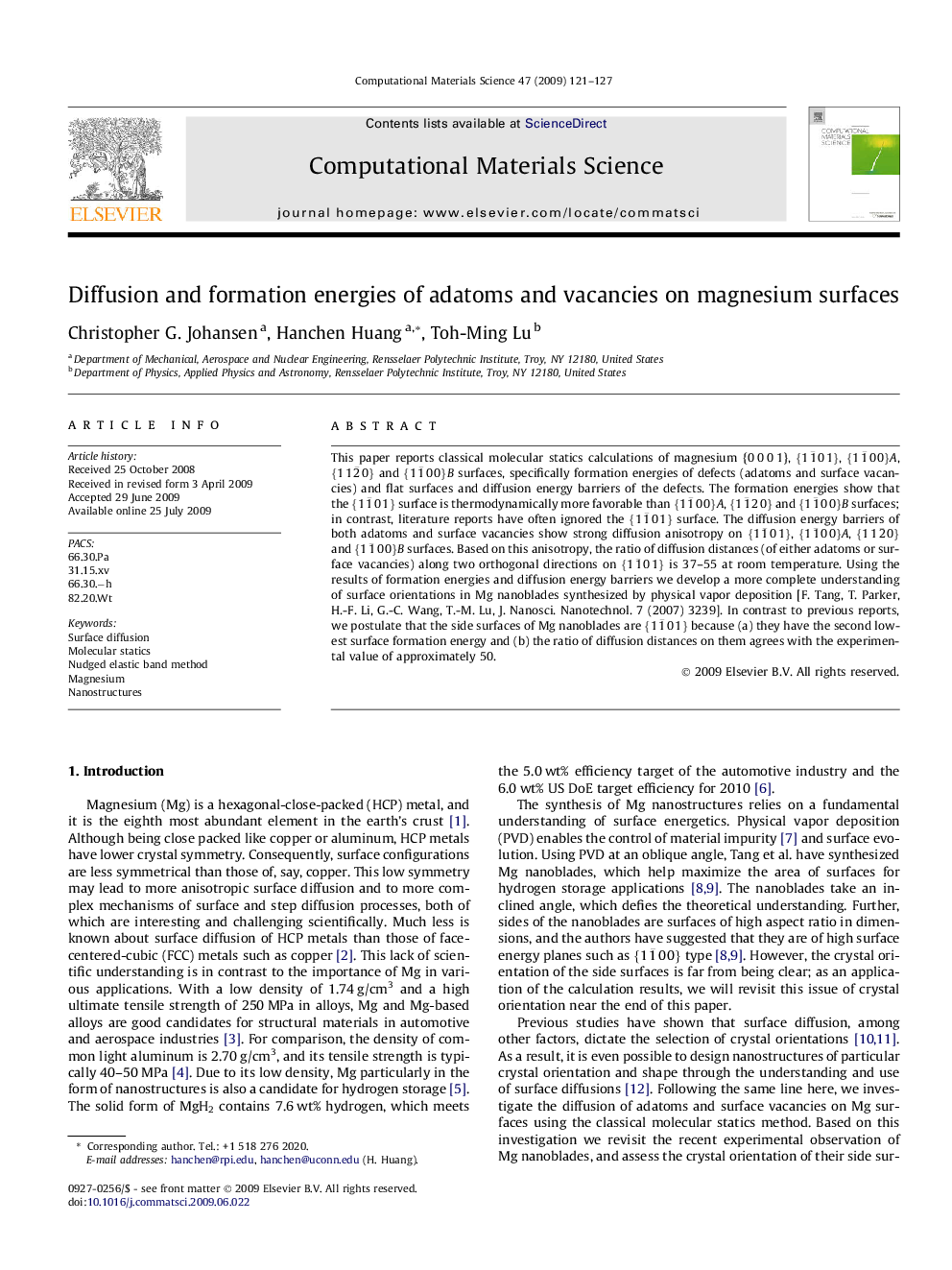| Article ID | Journal | Published Year | Pages | File Type |
|---|---|---|---|---|
| 1562898 | Computational Materials Science | 2009 | 7 Pages |
This paper reports classical molecular statics calculations of magnesium {0 0 0 1}, {11¯01}, {11¯00}A, {112¯0} and {11¯00}B surfaces, specifically formation energies of defects (adatoms and surface vacancies) and flat surfaces and diffusion energy barriers of the defects. The formation energies show that the {11¯01} surface is thermodynamically more favorable than {11¯00}A, {11¯20} and {11¯00}B surfaces; in contrast, literature reports have often ignored the {11¯01} surface. The diffusion energy barriers of both adatoms and surface vacancies show strong diffusion anisotropy on {11¯01}, {11¯00}A, {112¯0} and {11¯00}B surfaces. Based on this anisotropy, the ratio of diffusion distances (of either adatoms or surface vacancies) along two orthogonal directions on {11¯01} is 37–55 at room temperature. Using the results of formation energies and diffusion energy barriers we develop a more complete understanding of surface orientations in Mg nanoblades synthesized by physical vapor deposition [F. Tang, T. Parker, H.-F. Li, G.-C. Wang, T.-M. Lu, J. Nanosci. Nanotechnol. 7 (2007) 3239]. In contrast to previous reports, we postulate that the side surfaces of Mg nanoblades are {11¯01} because (a) they have the second lowest surface formation energy and (b) the ratio of diffusion distances on them agrees with the experimental value of approximately 50.
